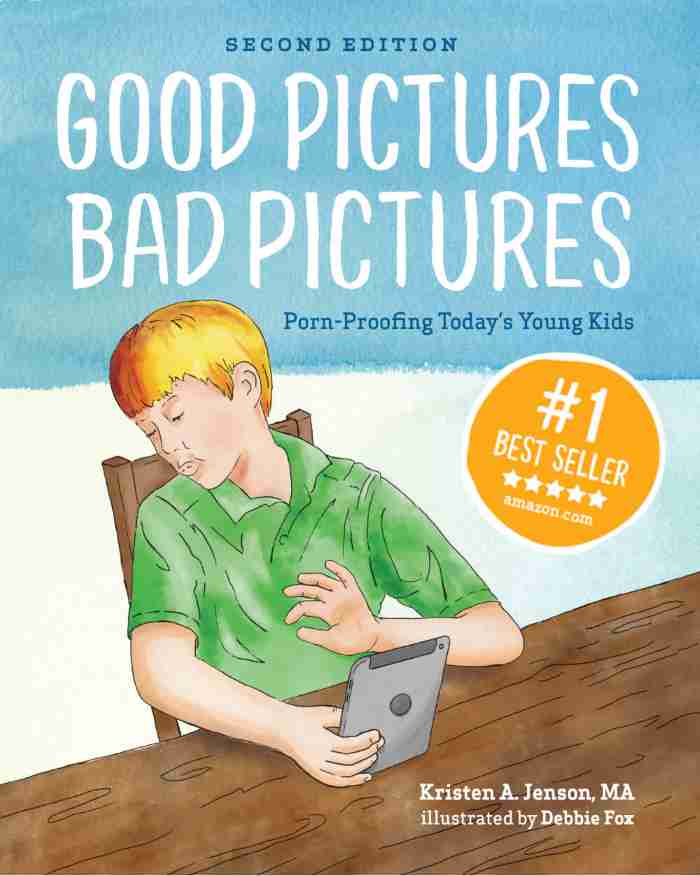
Autism and Porn: A 5-Step Game Plan for Protecting Special Kids
Many parents have asked us how to tackle the topic of pornography with children who have autism. Not much has been written on the topic of autism and porn, but there are some special considerations to keep in mind for these special kids!
Never had I become more familiar with outer space, nebulae in particular, than in the six-month period that I worked with Jayden* as his special education teacher. We created math problems about nebulae, read books about nebulae, and drew pictures of nebulae. Searching for new information and images online became part of his reward for doing his offline work.
Nebulae, for that period, was how I could relate to him and how he could find ways to relate to the schoolwork he needed to do.
If you have a child with autism, you may be able to relate to Jayden’s fixation. It’s probably not nebulae, but is one of the thousands of things that interest kids. You’ve probably recognized the treasure trove of information on the web about whatever it is that holds your child’s interest. Yet you may also be apprehensive about letting your child online because of the dangers that lurk there.

Autism and Porn
Your concerns are real and valid. The Internet contains things within its web that are harmful to any child (and adults, for that matter), but kids with autism are more susceptible to certain traps and harms. Recognizing that autism has a spectrum, you may find that these may apply to your child with varying degrees.
- As a human race, we’re hardwired for connection. People with autism are no exception, though many of them have a difficult time forming real-life relationships. It may feel safer and easier to connect online behind a screen (where they may feel very comfortable) since in-person interactions do not come easily to them. But while many children with autism are more tech-savvy than their parents, they are socially behind, meaning they are unable to navigate the invisible rules of social interaction.
- When something captures the attention of a person with autism, it often becomes a perseveration. Perseveration is a repetition of a meaningless action over and over again where the person is seemingly unable to stop. Sometimes, this is a way to self-calm. Due to the physical response to pornography anyone has, this can be especially attractive to children with autism — a self-soothing physical release.
- Children with autism are very habitual. Once they get in the habit of doing something, it is incredibly stressful for them to have their routine broken.
- Black and white thinking is the norm, which means it’s more difficult to understand gray areas and figurative/sarcastic language. Many people with autism are very literal. They tend to take things at face value and it can be difficult for them to determine what is real and what is not. What they think is a real online relationship may only be subterfuge, making them more vulnerable to predators.
5 Step Game Plan for Protecting Kids with Autism from Porn
Knowing that there are unique social and behavioral complexities that come with having autism, there are some specific tips that you can utilize to help keep your child safe from porn:
1. Don’t delay conversations about sex.
It can be incredibly hard to want to talk to your child about sex when they are still engaged in activities that younger kids enjoy. On the surface, it may seem s/he is too immature or just not ready for a sex talk. But remember, biology is still at work. The physical growth and hormonal changes are still happening. While what they take in with their eyes may not be processed in the same way as a neurotypical child, their body will most likely have a physiological response.
Related: “Will I Rob My Child’s Innocence If I Start Talking about the Dangers of Porn?”
2. Create boundaries.
All children need boundaries, but they are especially beneficial to children with autism, as sometimes they struggle understanding basic rules. One idea is to use visual cues such as colors to denote dangerous things. Writing the word “sex” in red and placing this on an index card next to the computer can remind your child that they may have found something dangerous and prompt them to come tell you.
3. Give your child simple words.
If your child struggles to communicate verbally, teach them simple words s/he can use if s/he sees something that violates the boundaries or rules that you’ve put in place (such as “bad” or “scary” picture). If your child is non-verbal, keep a small index card next to the computer with an image that represents something is wrong that s/he can bring to you if s/he comes across something inappropriate.
[[CTA]]
"Have you wanted to talk to your kids about pornography, but didn't know what to say?! I've felt that way for quite some time and finally found a solution - Good Pictures Bad Pictures. . . I highly recommend this book to all people with children. A must have for all parents!" - Amazon Review. CLICK HERE to learn more about Good Pictures Bad Pictures: Porn-Proofing Today's Young Kids.
Related: 5 Ways to Teach Kids to Say NO! to Porn with Assertive Communication Skills
4. Create an Internet routine.
Providing a routine when your child gets on the Internet can help set expectations and limit exposure. For example, you may create ordered bookmarks across the URL bar to make access to approved sites handy. Your child knows which bookmarks to go to when, depending on the purpose of the Internet use that day. This creates positive, structured habits surrounding Internet usage. Also, using Internet filters (great for kids and adults) can help safeguard against accidental exposure. But keep in mind — no filter is ever foolproof.
5. Facilitate as much in-person interaction as possible.
John Robinson, an adult writer with autism, writes in an article for Psychology Today, “For an autistic person who cannot form relationships in real life, porn could easily become more compelling than the desire to be with a real-life girlfriend.” As hard and as awkward as it can be to engage socially, the more attempts made, the more eventual progress you’ll see.
Navigating Internet safety with any child can be awkward and there are special challenges that come with autism, but you are not alone in this struggle. Reaching out to other parents and seeing what has worked for them is also a great resource in keeping all our children safe.



Good Pictures Bad Pictures
"I really like the no-shame approach the author takes. It's so much more than just 'don't watch or look at porn.' It gave my children a real understanding about the brain and its natural response to pornography, how it can affect you if you look at it, and how to be prepared when you do come across it (since, let's face it... it's gonna happen at some point)." -Amazon Review by D.O.






